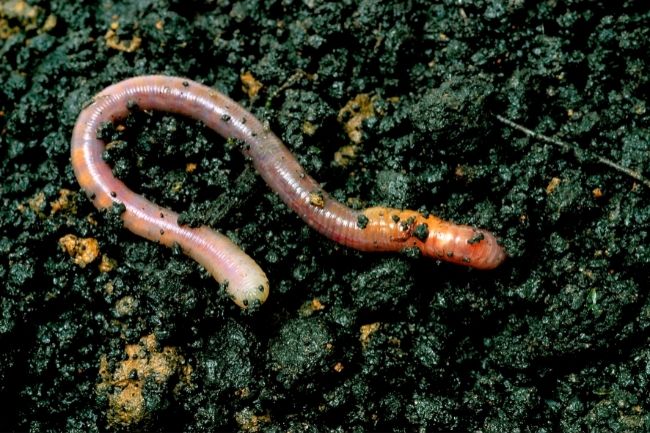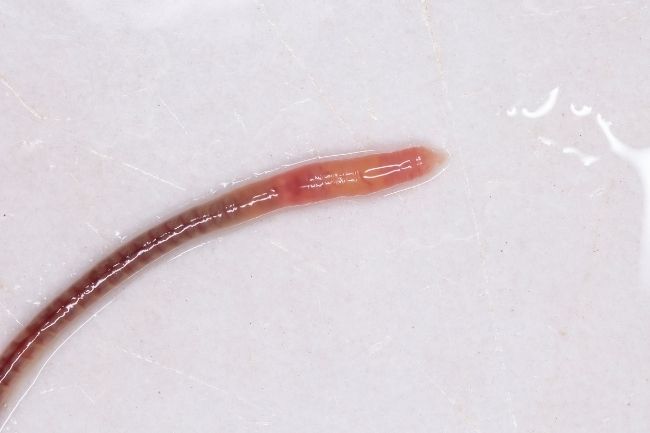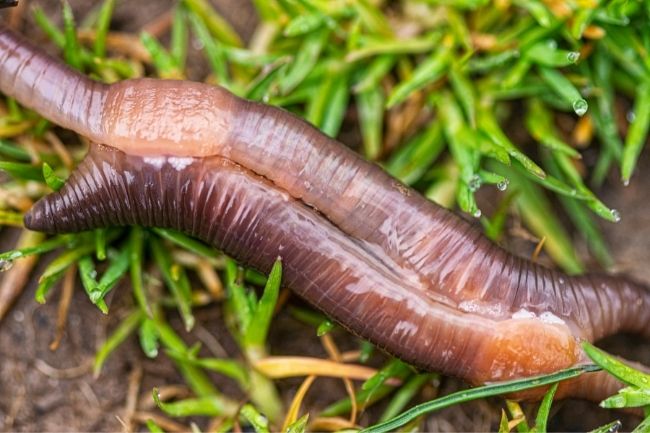Earthworms live fairly simple and straightforward lives, yet they still need a range of things to survive, including food, water and the correct temperatures.
Contents
What do earthworms need to survive?

There are over 6,000 species of earthworms globally. Many live across different climates, in different habitats and eat different kinds of food. This means that not all earthworms like the same things.
However, they do not stray far in terms of their main needs, and all earthworms have basic requirements that have to be fulfilled to allow them to thrive.
| Needs | Description |
|---|---|
| Moisture | Earthworms require moist environments to live. |
| Oxygen | They need access to oxygen-rich environments. |
| Organic Matter | Earthworms feed on decaying organic matter. |
| Suitable pH | They thrive in neutral to slightly acidic pH. |
| Temperature Range | Earthworms prefer moderate temperature ranges. |
| Conditions | Description |
|---|---|
| Moist, Loamy Soil | Earthworms thrive in soil that holds moisture well. |
| Rich Organic Matter | Abundant organic matter provides food for earthworms. |
| Adequate Drainage | Good soil drainage prevents waterlogging. |
| Optimal Temperature | Moderate temperatures are favorable for earthworms. |
| Minimal Disturbance | Less disturbance allows earthworms to thrive. |
Food
Like all living things, earthworms require food. We may not think of earthworms as eating, as to the naked eye, their mouths are hard to see. Yet, they do have a mouth on their head, and this allows them to tear off and eat organic material to fuel their bodies.
The organic material that earthworms eat is very varied, and can include plant matter such as leaves and dead roots, rotting food or even faeces.
However, some worms do prefer certain types of food over others. The species of worms we might come into contact with most frequently are compost worms, such as tiger worms. Tiger worms are small and bright red.
These worms tend to live in people’s compost heaps and are adapted to cope with the high levels of food available to them in their environment. Other worms prefer to feed on dead leaves, and less nutrient laden foods.
Moisture

We all know that earthworms are wet and slimy if we hold them. While we might not find this very appealing, this moisture is essential to the earthworm.
Earthworms breathe through their skin, with oxygen diffusing into their bodies through the surface. In order for this to occur, they need their skin to be wet. The mucus they secrete assists with this a great deal, but it will dry up in hot or dry conditions, causing them to suffocate.
You will often find worms on the surface who have not been able to return underground and have shrivelled up in the sun, however, even within the soil overly dry conditions can cause them to dehydrate and die.
Also read: Here’s How Earthworms Breathe? (Without Lungs)
Soil
Technically, earthworms do not need soil. You will easily be able to see this for yourself if you move a plant pot that is sat on a hard surface, such as concrete. More often than you’d expect, you’ll find a number of earthworms wriggling around underneath.
This is because not all earthworms live in the soil, some will live at the surface. However, soil is largely a very suitable substrate for earthworms to live on or in. This is because it can be kept moist, can be full of food, and can allow burrowing worms to create tunnels for them to move through and live in.
You could replace soil with another type of material that recreate these conditions, however, soil is generally readily available, and perfectly suited to most worm species.
Darkness
Earthworms do not technically need darkness; however, they dislike being exposed to light. Earthworms have a large number of simple light sensors that cover much of their body. When exposed to light, they begin to wriggle and attempt to get away.
While it’s not thought that light physically harms them, it does clearly cause a stress response, which is not beneficial to them.
In most cases, earthworms will live within the soil, or underneath objects. This means that they are sheltered from light without needing to actively avoid it.
Warmth
Like most animals, earthworms do not enjoy being too hot or too cold. In freezing conditions, adult earthworms will die, as ice crystals will form in their cells.
They can survive most temperatures above freezing, however, and are generally more active in the colder months than many other surface-dwelling bugs.
Heat is also unpleasant for earthworms. As previously stated, they need moisture to breathe, so hot and dry conditions can cause them to suffocate. Even if moisture isn’t a problem, overly warm conditions can result in them becoming too hot and dying, as we would if our temperature becomes too high.
A mate

Earthworms aren’t generally social creatures and usually live very solitary lives. However, their lives are also often very short, with some species living only one or two years. This means, that in order to continue their lineage, they need to mate.
Earthworms are hermaphrodites, meaning they are both male and female. During mating, both worms pass sperm to each other, and then the individual worm uses it to fertilise its eggs.
Eggs are deposited in the soil, protected by an outer cocoon. This means that if the adults are killed off during drought or freezing conditions, the young can hatch and recolonise the area.
Also read: Earthworms Reproduction Explained (Sexual and Asexual)
Survival of the fittest
Overall, earthworms do not need a great deal to survive. Their simple requirements can generally be met by the environment they have located themselves in.
However, unlike many other animals, it isn’t easy for them to relocate when that environment changes. This means that as conditions change, such as if flooding were to occur, they are often simply wiped out.
Luckily, for them, their young are the ultimate survival kits, their cocoons keeping them safe from cold, heat and much more. So with earthworms, it’s not always about the individual, but about the legacy, with their young taking over where they could not overcome the intolerable conditions.

